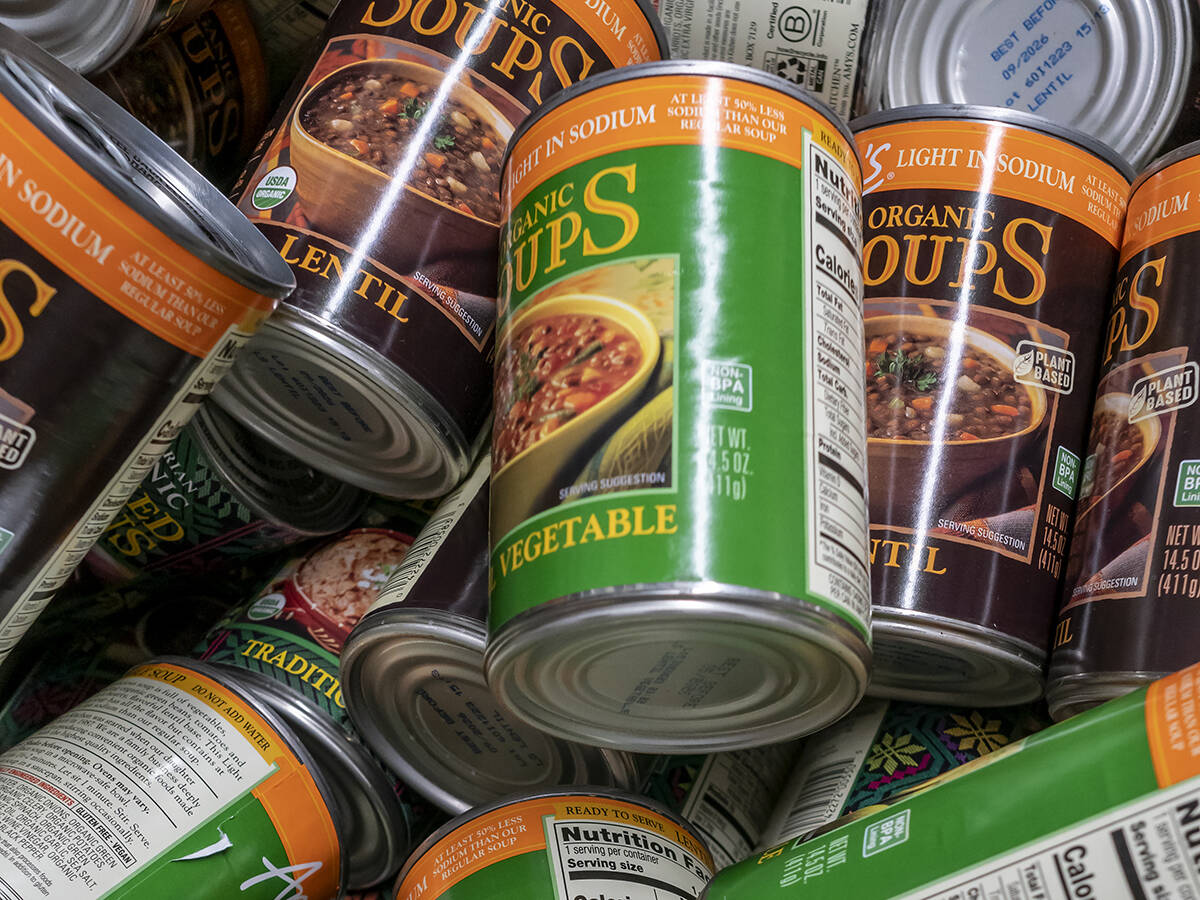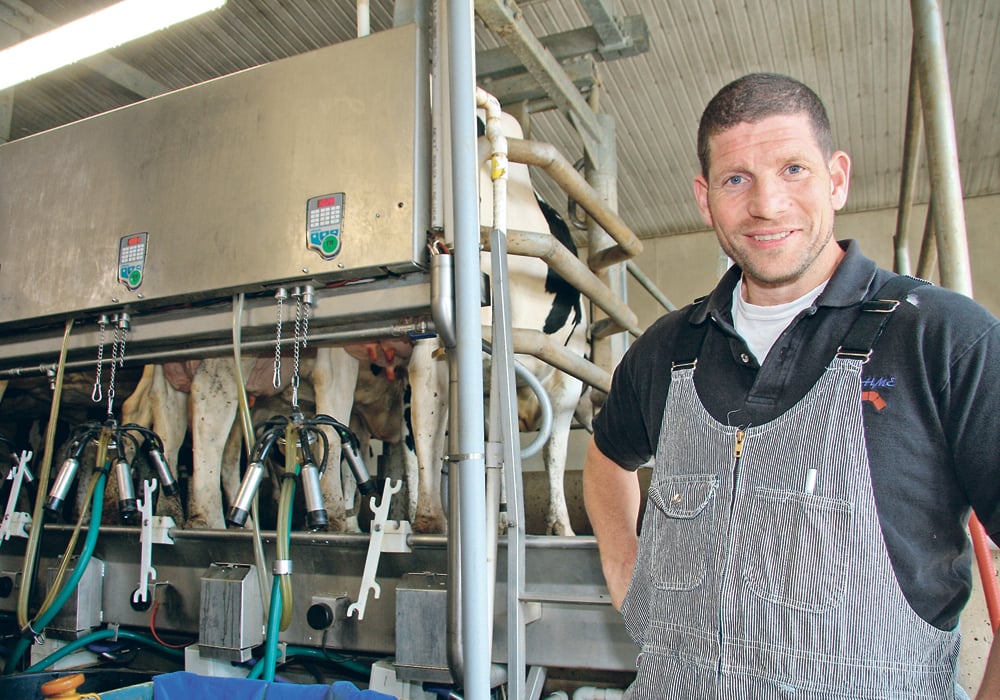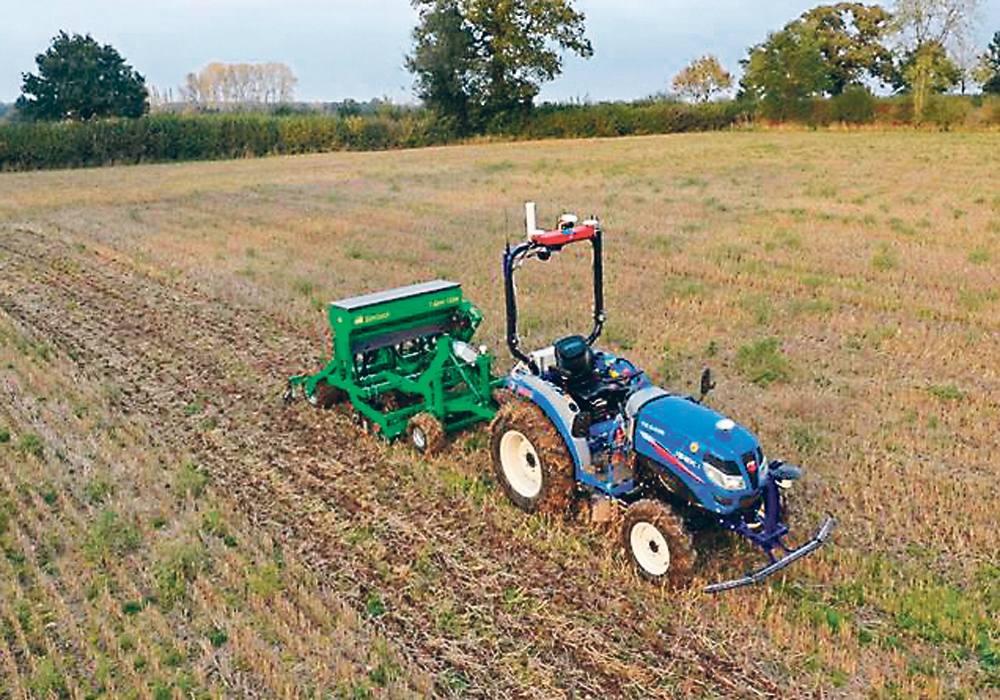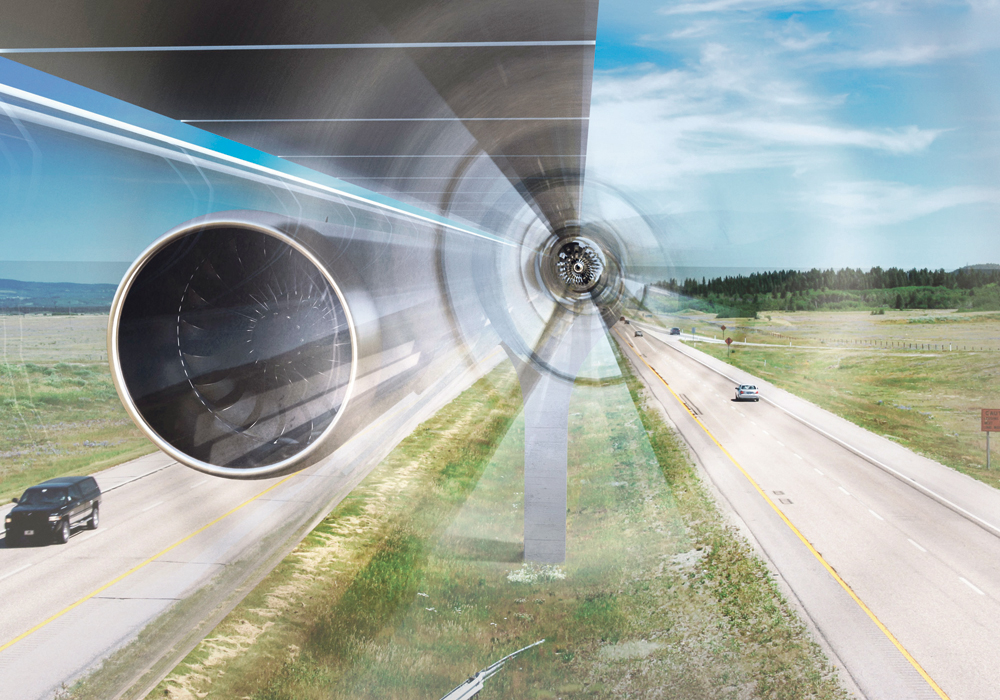Researchers showcase ‘the future of farming’ using autonomous vehicles to plant, treat and harvest one hectare of barley
The mission: to plant, treat and harvest one hectare of barley using only autonomous farm equipment.
Mission accomplished.
The feat occurred this year in a field at Harper Adams University in the United Kingdom, and university researcher Jonathan Gill, one of the self-professed geeks behind the project, considers it a rubicon in the future of farming.
“We wanted to break down the perceptions of what can actually be done with agricultural technology,” Gill told those at the Farming Smarter conference in Lethbridge earlier this month.
Read Also

Sustainable food has ‘lost all meaning’: prof
That marketing strategy is deader than a doornail, says a University of Guelph professor who specializes in consumer preferences and perceptions of agriculture and food.
“Everybody thinks it’s really, really difficult, that it’s well off into the future and (we) just wanted to really show that the capabilities are there now.”
Other stories in The 2017 Innovation Issue:
- New genetic tools offer way to restore cattle vigour
- Technology can help breed better cattle
- Biotech companies prospecting for microscopic gold mines
- Bee buzzes critical to calculating crop pollination
- Fungus could aid plant growth, reclaim oil sites
- Cracking the megapest genetic code
- Genetic mapping vs. genome sequencing
- French robot prowls the chicken coop so you don’t have to
- New laser technology proves successful for B.C. orchard
- High-tech deterrent devices protect crops from … intruding elephants?
- Diamondback moths focus of Cornell study
- VIDEO: Print your own parts?
- Bees may be serving up humanity’s next big food … and it isn’t honey
- Big doubts about big data
- The little plane that did
- Soil mapping soon to be more usable
- Managing fields could soon move to plant level
- GM pollen: it gets around
- Autonomous vehicles not on the radar for most farmers
- Farm wi-fi connectivity opens new world of possibilities
- Nanotechnology to alter animal health, food systems
- As big data comes to the farm, are policy makers keeping up?
- Farmers not rushing to grab digital tools: survey
- Connecting the DOTs
- Researcher understands farmer doubts about hands-free farming
- The trouble with telematics
- Sensor sensibility
- The discovery that could shake up the beer industry
- Grow your own clothes
- Blockchain technology offers food safety, traceability and more
- Supercluster makes big innovation pitch
- Quicker, cheaper biofuel production in the works
- Alternatives to livestock antibiotics are difficult to assess
- A revolution is coming
Gill and his team equipped a tractor and an older model combine with modern technology allowing them to operate the equipment autonomously. The tractor and its system cost about $60,000 and pulled a drill calibrated in a nearby plot and then used on the hands-free hectare, which is 2.5 acres.
The combine, 25 years old with a two-metre header, used laser scanners to reap an estimated 67 bushels per acre from the plot.
It “worked as well as a brand-spanking new Lexion,” said Gill, albeit operating at an average speed of about four km-h.
The team also developed a scout vehicle, adapted from an old wheelchair, which it sent to the field in the early crop stages for soil and plant samples to determine fertilizer and herbicide needs.
They also used soil maps and drones with multi-spectral cameras to check the crop later in the season. One drone was equipped with grabbers to pull some plants and carry them off the field so the team could determine ripeness.
From start to finish, autonomous equipment was used for pre-seed herbicide application, planting, rolling, fertilizing, applying herbicides and fungicides and a pre-harvest desiccant and finally, combining.
“After doing nine applications with our tractor, we got quite confident with our system,” said Gill, who fondly recalled eating fish and chips while watching the farm equipment work.
“We wanted to make sure that all agricultural machinery was able to be adjusted into our methodology.”
Gill said autonomous technology has been in the hands of major farm equipment manufacturers for a while, but they’ve instead concentrated on the push for larger, faster equipment and implements.
The Hands Free Hectare project garnered international attention, which was also a goal for Gill and his team. Social media was liberally used to show the project as it progressed.
“I wanted to make sure that the world saw that a crop and agriculture was exciting. This entire industry is kind of backwards in the understanding of how technology can actually be used to actually make our lives a little bit better,” he said.
A second season and a crop of winter wheat is now planned, “to prove it wasn’t a fluke” but also to explore ways to improve yield through better crop sensing and agronomics.
Why attempt a hands-free hectare in the first place?
Gill said autonomous equipment on a wider scale could address farming problems such as limited time windows, cost of machinery, limited labour and soil compaction caused by large machines.
He also said that lack of resolution in current precision farming methods make it difficult to make best use of the information because of large machine size. Robots could move variable rate applications to the individual plant level.
Details on the project can be found at handsfreehectare.com.


















